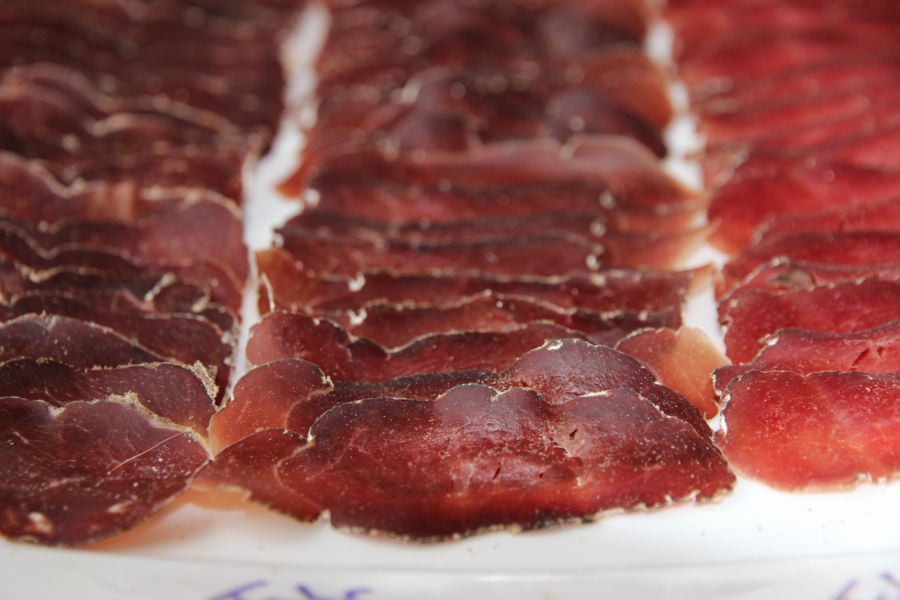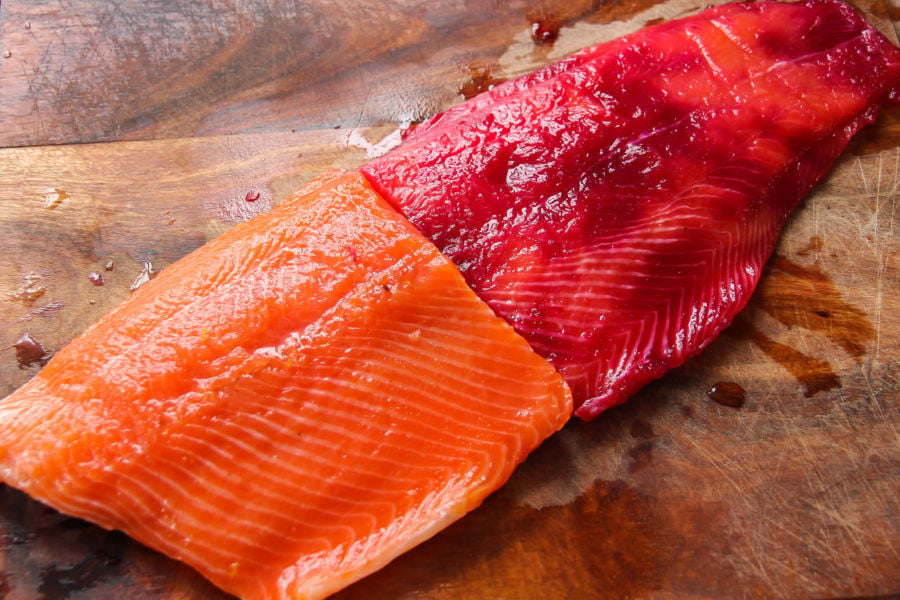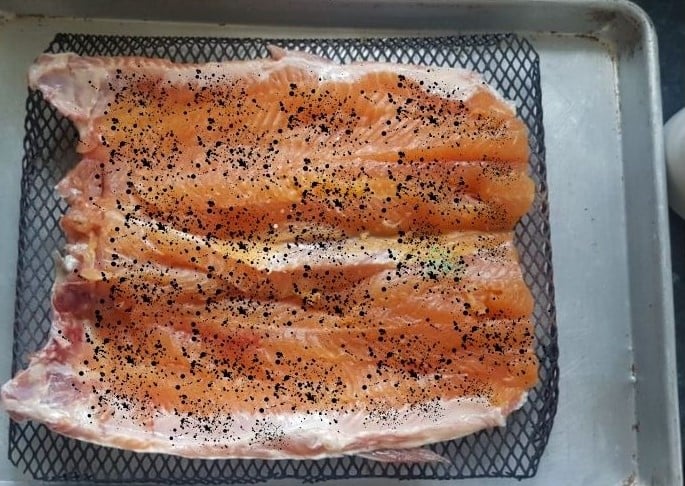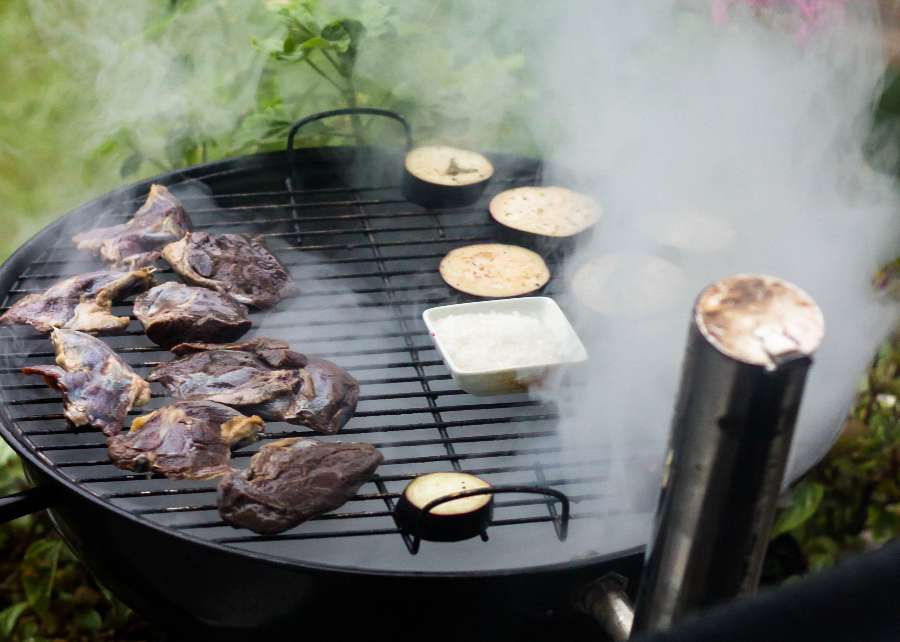The different methods for curing meat date back thousands of years. Although the techniques have been refined over the years, the essence of curing meat remains the same.
Dry curing and smoking meat is all about the preservation effect of salt. I researched its history and have used these methods for several decades.
I’ve done many projects with all these styles, which lead to different outcomes. The techniques are sometimes confused. Here is a table to highlight the content.
Salt Methods for Different Meat Techniques
| Curing Method | Process | Best Used For | Key Benefits |
|---|---|---|---|
| Saturation Salt Curing (Dry or Wet) | Meat is fully surrounded by a high concentration of salt (dry-packed or submerged in brine) until fully cured. | Traditional salt pork, fish, or long-term preservation. | Maximizes preservation, prevents bacterial growth. |
| Dry Curing (Includes Saturation & Equilibrium) | Salt is applied directly to meat in controlled amounts, either fully surrounding it (saturation) or using precise ratios (equilibrium). | Dry-cured meats like prosciutto, bresaola, pancetta, and salami. | Weight loss-driven preservation, deep flavor development. |
| Equilibrium Curing (Dry or Wet Brine) | Salt is used based on a percentage of meat weight to control salt levels. Can be done dry or in a brine. | Whole muscle meats (coppa, bresaola, duck breast), controlled curing. | Prevents over-salting, allows precision curing. |
| Salt Wet Brine Curing | Meat is submerged in a saltwater solution for moisture retention or full curing. | Cold smoking prep, corned beef, hams, poultry. | Retains moisture, enhances tenderness, aids preservation. |
| Immersion Salt Brine Injection | A salt solution is injected into the meat to cure from the inside. | Commercial bacon, ham, large cuts that need uniform curing. | Speeds up curing, ensures even salt distribution. |
| Cold Smoking & Salt Curing | Meat is fully salt-cured first, then cold-smoked at low temperatures. | Smoked salmon, bacon, dry-cured sausages. | Enhances preservation, develops smoke flavor. |
| Hot Smoking & Salt Curing | Meat is partially or fully cured, then hot-smoked for cooking and flavor. | Smoked trout, salmon, ham. | Curing enhances texture, retains moisture while smoking. |
| Quick Meat Preservation (Jerky & Biltong) | Meat is salted and dried, often with vinegar for added preservation. | Jerky, biltong, portable protein snacks. | Long shelf life, intense flavor, easy to store. |

Various methods of curing meat with salt exist, depending on the outcome you’re trying to achieve.
Before making just about any salami or salumi, you primarily use dry salt curing. The goal is weight loss to intensify the flavor and preserve the meat. When all the factors align, and the good bacteria is kind to you, you have some true artisan delights to savor.
However, this is just one technique.

Curing is either to hold moisture in for cooking or smoking, or to reduce unwanted bacteria. It must be fully cured for long-term preservation goals. The methods depend on the salt concentration and the proceeding steps.
The video I made below also highlights the different effects of salt.
Salt Methods for Meat
Sea salt, non-iodized salt, is always pure without any additives. Caking agents and other table salt additives can affect meat curing.
Saturation Salt Method
Commonly, salt pork is a method of saturation curing. A lot of salt penetrates the meat to ward off unwanted bacteria.
Salt pork has a long history, dating back to the 17th century. During the Napoleonic Wars and the Civil War, pork salt was part of standard military rations.
Heavily salted pork (here is my main article on salt pork) is left to cure for at least a week. The cuts of meat used were primarily pork belly. The belly was boiled often to remove the excess saltiness before it was eaten.
What is Salt Pork & Fish used for?
There wasn’t any refrigeration back then, so this provided routine on long voyages or during all military campaigns. It seems that the homesteader was also able to use this quite easily.
Ways of Using Dry Salt
There are quite a few ways that dry salt curing is used.
Entirely Surrounding Meat with Salt
When salt was first used to preserve things like prosciutto ham, the pork leg was packed in salt for many days. This method is still used nowadays; however, some people always get a meat product that is too salty. I guess back in the day, as long as the prize pool was preserved, you weren’t too worried about this.
I often use salt for curing, making a Scandinavian dish called gravlax. It’s traditionally used to cure a salmon fillet. The fillet is salted for 24 hours with only the addition of dill in the basic recipe.
You then rinse the salmon under fresh water to remove some saltiness. If it is still too salty, I soak it for 30 minutes and then try again. Then, I finely slice it and eat it —a fantastic, simple cure that produces mighty fine
Many products you might already eat, from prosciutto to dry-cured bacon, use salt to cure the meat.
Dry Rubs
Dry rubs are often used for low and slow barbecue smoking. They can be rubbed on and immediately smoked, or you can leave the dry rub, a mix of salt and spices, overnight to penetrate. Depending on the size and density of the meat, the salt may only penetrate into the meat, curing it only near the surface.
Since this involves smoking and cooking simultaneously, the curing is not for complete preservation. It’s about getting the food soft and cooked with a good smoke flavor. When it takes 4 to 12 hours, the smoke will flavor the food nicely.
Equilibrium Curing
This is a method I am very familiar with. It is used widely for dry-cured products. The basics are that you use a percentage of the total weight to work out how much salt you will use. By doing this, you might under or over-infuse the meat. So you can cure the meat and bag it in the fridge for a longer period of time.
Minimal Dry Salt Sprinkling
When I use a portable smoker for fresh salmon or trout fillets, it’ll be primarily for hot smoking. I use a light cure, sprinkling salt and sugar to help hold the moisture and season the fish.
Here is a visualization of the light salt cure I use on the fish before hot smoking in the portable smoker. The black dots represent the salt amount I use.

I leave it overnight in the fridge and uncover it in the morning. It takes some drying to form the pellicle, and then it’s ready to smoke.
Cold Smoking & Salt Curing

It is an essential step in cold smoking. Having the meat completely salt-cured means the harmful bacteria cannot multiply. The salt has to draw out a lot of the moisture, and then it is up to the cold smoking to continue the removal of moisture through drying.
The humidity level significantly impacts drying and cold smoking. Cold smoking is a craft.
Most people think that smoking only a few hours preserves the meat, which is partially true. But now I know that the drying and moisture humidity are the significant factors.
Weighing meat before curing or brining will help you determine the exact final weight and when the meat is fully preserved if you want to do it in a commercially accurate way. This is for particular styles/processes of curing, like dry-cured whole muscles or salami.
Salt Wet Brine Curing
Wet Curing is salt, water, and often other spices.
The concentration of salt dictates what method and outcome will happen
Wet Brine Curing can hold moisture on the surface of the meat whilst cooking and/or smoking.
Or curing thoroughly meat to hang and dry. Leading to preservation for longer-term storage
Immersion Salt Brine Injection
I’ve used this method effectively for wet brine curing an entire leg of pork.
With an injection system, you can needle-inject the salt brine into many areas of the meat.
Commercially, this is often done to speed up the production process.
After visiting a commercial meat curing operator in Indianapolis, I saw how they injected the pork belly. Then, they were put in tumble spinning machines to disperse the salt wet cure rapidly into the meat.
They were hung and cold-smoked.
This was to create applewood cold smoked bacon (yes cold smoking bacon is safe, I wrote an article about that here)
Hot Smoking & Salt Curing
Curing through dry salt and wet brining is essential in the hot smoking process, this is cured hot smoking, not dry rub hot smoking, such as low and slow smoking.
Many low- and slow-smoking recipes are based on dry rub, which does not involve curing the meat before cooking/smoking. Instead, it requires seasoning and slight moisture holding on the surface.
The difference is that the meat has enough time to absorb the smoke flavor over the long hours of low and slow smoking. Fat rendering to moisten the meat is the other key.
When making smoked trout and salmon, it makes a huge difference using the curing for the smoking/cooking process.
Long-Term Meat Storage
salt is the key ingredient in long-term meat storage. Although there are other techniques for storing meat, this is one of the oldest and most traditional ways.
Pickling, canning, and dehydrating are other methods that typically revolve around salt.
Easy & Quick Meat Curing
One technique I use for creating a lasting protein snack is to preserve it with salt and vinegar. Jerky or Biltong are easy and last for some time in the wild.
Biltong reservation is based on denaturing the meat (like cooking) using vinegar and salt. This is a powerful preservation technique (like pickling in some ways), so pickling in jars uses the same combination.
I even heard of the traditional South African Way many years ago. The salt from the horse sweat was a preserving agent, by putting the meat between the saddle and the horse. I don’t think I will try that one, but I wonder if it holds truth to a good story.
Is brining only for moisture retention?
No, brining can serve different purposes depending on the salt concentration. Low-salt wet brining helps retain moisture for hot smoking or cooking, while high-salt brining can fully cure meat for cold smoking or drying (e.g., salt-cured fish, ham).
Does equilibrium curing draw out moisture?
Not necessarily. Unlike traditional dry curing, which heavily relies on moisture extraction, equilibrium curing carefully controls salt absorption to achieve a consistent cure without over-drying. The goal is flavor balance and controlled preservation.
Can wet brining be used before cold smoking?
Yes—Wet brining is commonly used before cold smoking to infuse salt and flavors while slightly curing the meat. It helps preserve, enhance texture, and absorb smoke, especially for fish like salmon and meats like ham or bacon.
How do I choose between wet and dry curing?
Wet brining is ideal for juicier, cured meat when hot smoked or large batching wet curing (fish for instance). If you’re aiming for dry-cured meats with preservation/drying (e.g., prosciutto, bresaola), dry or equilibrium curing is better.
I would love to here any comments or questions about the topic. Thank you for reading.

Tom Mueller
For decades, immersed in studying, working, learning, and teaching the craft of meat curing, sharing the passion and showcasing the world of charcuterie and smoked meat. Read More
